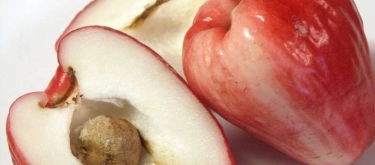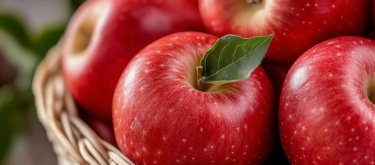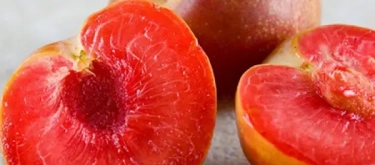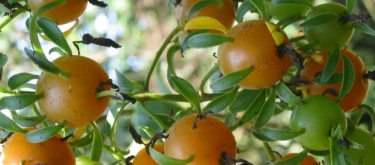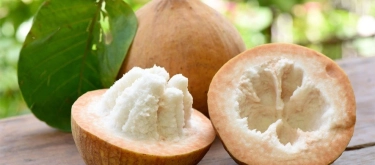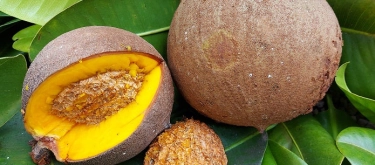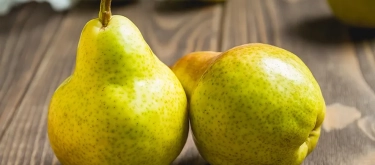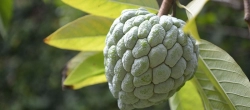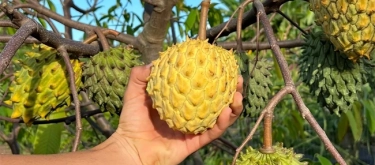Rose Apple (Pomarosa): Taste Profile, Aroma, Benefits and Health Risks
Rose apple (also known as Pomarosa, Jambosa, Malabar Plum; Syzygium jambos) is a tropical fruit native to Southeast Asia and India, later introduced widely throughout the Caribbean, Central America, and Australia. Renowned for its refreshing taste and distinct rose-like aroma, rose apple has captivated culinary traditions worldwide as both a fresh fruit and aromatic ingredient.
Rose apple seeds and pits contain compounds that may be harmful if ingested in large quantities; therefore, they should be avoided. Individuals allergic to tropical fruits, particularly those sensitive to guava or eucalyptus, should consume cautiously. Pregnant women may consume moderate amounts safely.
What does Rose Apple (Pomarosa) taste like?
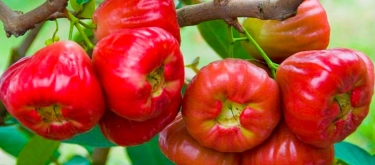
Complete Sensory Description:
Taste
Rose apple exhibits a subtly sweet, mildly tart, and delicate floral flavor, with prominent rosewater-like undertones. The fruit’s taste is refreshing, crisp, and delicately balanced, neither overly sweet nor excessively sour.
Aroma
Its distinctive aroma closely resembles fresh roses, characterized by floral notes complemented by mild fruitiness reminiscent of pears or apples, with subtle hints of eucalyptus and honey.
Texture
The texture of rose apple is crisp, juicy, and somewhat crunchy, resembling fresh pears or apples, but notably lighter and airier. The edible flesh is slightly spongy, juicy, and refreshing, enclosing a central cavity containing small, firm seeds.
Appearance
Rose apples are small to medium-sized (3–6 cm diameter), round or oval-shaped fruits with smooth, thin skin ranging from pale yellow-green to pink or reddish hues when ripe. Internally, the flesh is white to pale cream, surrounding a hollow central core with small seeds.
In-depth Flavor Analysis:
Rose apple’s uniquely delicate flavor arises from a harmonious balance of sugars, mild acidity, tannins, and distinctive aromatic volatiles:
-
Sweetness Profile: Subtle sweetness primarily derived from fructose and glucose, offering a mild, clean sweetness reminiscent of fresh pears or lightly sweetened apples.
-
Acidic and Astringent Components: Mild tartness results from malic and citric acids, imparting freshness and balancing the sweetness. Low levels of tannins provide gentle astringency, enhancing complexity without overpowering flavor.
-
Aromatic Compounds: The fruit’s rose-like aroma primarily stems from aromatic volatile compounds, particularly geraniol, linalool, and citronellol—components commonly found in rose essential oils. Additional notes from cineole provide mild eucalyptus-like freshness, while ethyl acetate and methyl anthranilate enhance fruity undertones.
-
Environmental Factors Influencing Flavor: Flavor and aroma intensity vary significantly depending on climatic conditions, ripeness, and soil composition. Warm climates with adequate moisture typically produce fruits with enhanced sweetness, lower acidity, and stronger floral aromatics.
Varieties and Culinary Applications:
Rose apple has several regional varieties differing mainly by color, size, and sweetness intensity:
- Pink Varieties: Mildly sweet with stronger rose-like fragrance, ideal for fresh eating.
- Greenish-Yellow Varieties: Slightly more tart, commonly used in cooking or pickling.
Culinary uses include:
- Fresh Consumption: Widely eaten fresh, often chilled, sprinkled with salt, sugar, or spices.
- Beverages: Popularly used in refreshing juices, smoothies, infused waters, and aromatic teas.
- Desserts: Incorporated into fruit salads, sorbets, gelatin desserts, custards, and pastries for subtle floral sweetness.
- Pickles and Preserves: Frequently pickled, preserved as jams, or made into aromatic sauces and chutneys.
Selection and Storage:
Select rose apples that are firm, smooth-skinned, and fragrant, indicating peak ripeness. Avoid fruits with wrinkles, blemishes, or excessive softness. Store ripe fruits refrigerated in breathable containers for up to one week. For extended preservation, fruits can be pickled or converted into jams or preserves.

Nutritional Insights:
Rose apple provides dietary fiber, vitamin C, antioxidants, potassium, calcium, and trace minerals. Regular consumption supports digestive health due to fiber content, enhances immune function via vitamin C, and contributes to heart health through antioxidants and potassium. Its low-calorie profile makes it beneficial for weight management and blood sugar control, ideal for individuals aiming to maintain balanced nutrition.
Expert Insights & Culinary Tips:
- Flavor Pairings: Rose apple complements citrus fruits, fresh herbs like mint and basil, spices like cinnamon, cardamom, and ginger, and creamy textures like yogurt or soft cheeses.
- Preparation Recommendations: Fresh rose apples taste best chilled, enhancing their crisp, refreshing quality. Pairing with mild citrus dressings or sweet dips balances flavor beautifully.
- Usage in Cooking: Gentle cooking (such as poaching) preserves delicate flavor and enhances sweetness, making rose apple an excellent addition to sauces, compotes, and desserts.
Interesting and Curious Facts:
- Historically, rose apples were valued in traditional Asian medicine for their cooling properties, used to soothe digestive issues and relieve inflammation.
- The name "rose apple" originates from its remarkable floral fragrance, closely resembling the scent of roses rather than apples themselves.
- Rose apple trees are frequently planted ornamentally, admired for their attractive flowers, aromatic fruit, and dense shade.
Harm and Dietary Considerations:
While safe in moderation, seeds of rose apple should not be ingested, as they may contain mildly toxic compounds. Individuals allergic to related fruits (such as guava or eucalyptus) should consume with caution. Pregnant women may safely consume moderate amounts but should avoid seeds entirely.
Religious Dietary Considerations:
Rose apple fruit is universally permissible across major religious dietary practices, including Halal, Kosher, Hindu vegetarianism, and Buddhist diets, without known restrictions or specific associations.
Final Thoughts & Sensory Journey:
Rose apple enchants with its delicate floral fragrance, crisp, juicy texture, and gently balanced sweetness. Offering both culinary versatility and nutritional value, rose apple presents a delightful sensory journey, blending elegance and refreshment in every bite.
Resources:
- "Edible Medicinal and Non-Medicinal Plants, Volume 4: Fruits" by T.K. Lim (Springer, 2012)
- "Tropical and Subtropical Fruits: Postharvest Physiology, Processing and Packaging" by Muhammad Siddiq (Wiley-Blackwell, 2012)
- "Handbook of Fruit and Vegetable Flavors" by Y.H. Hui (John Wiley & Sons, 2010)
